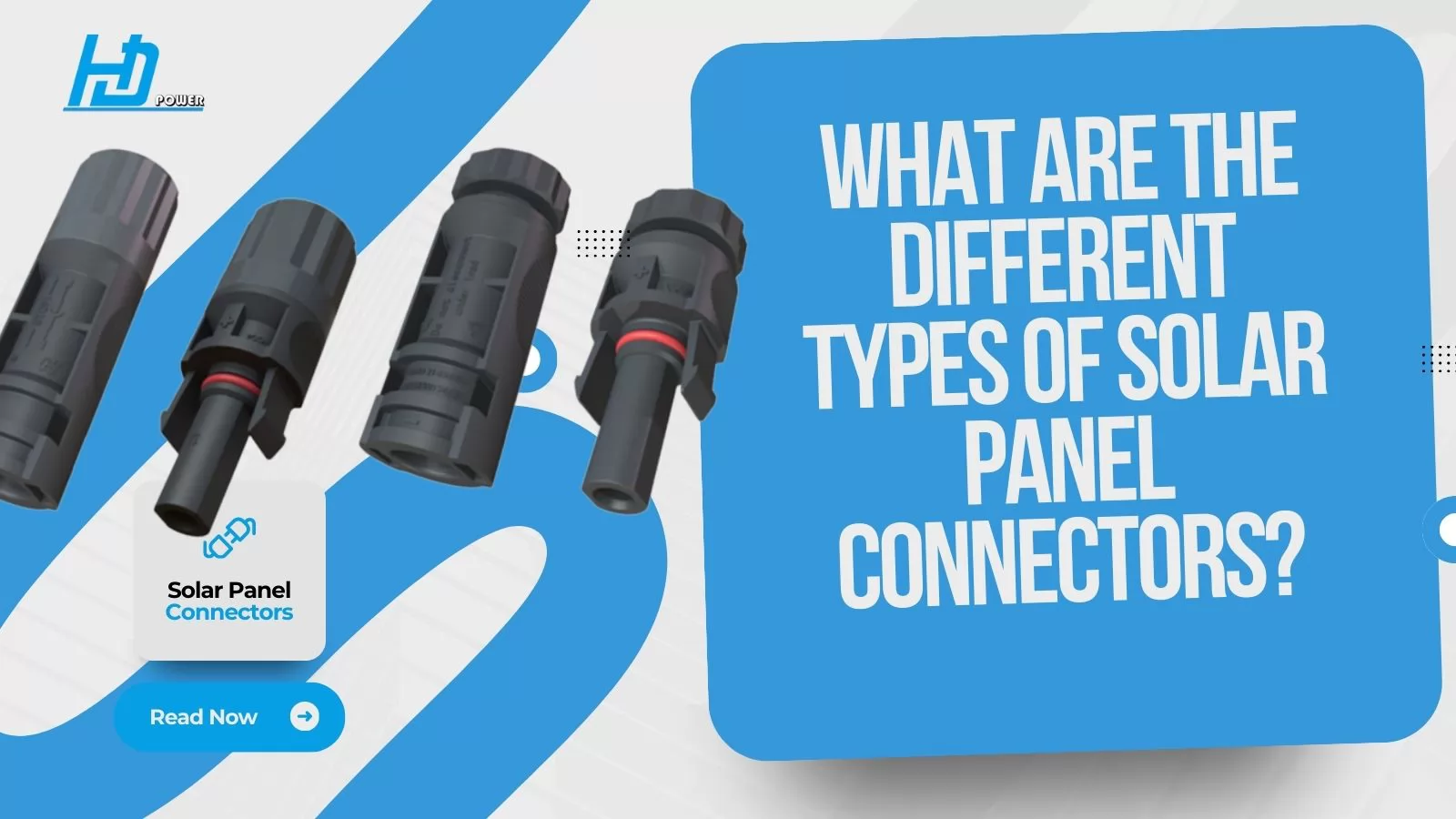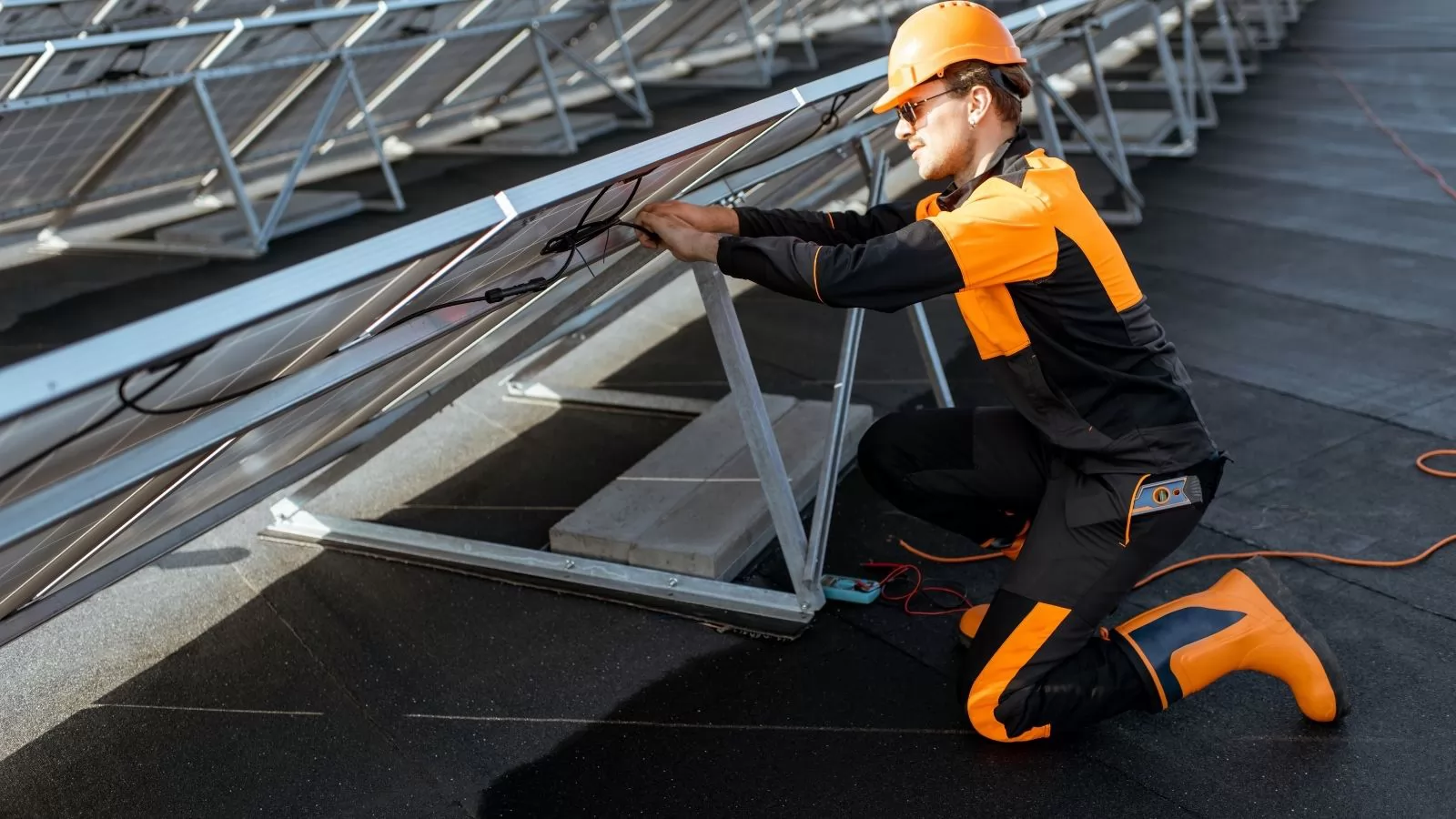.png)

.png)


.png)
.png)
.png)
.png)


Solar panel connectors are the unsung heroes of any photovoltaic (PV) system. These small but critical components are responsible for creating secure, reliable, and weatherproof electrical connections between your solar panels, inverters, charge controllers, and batteries. Without them, efficiently transferring the power generated by your panels would be nearly impossible, requiring complex, hard-wired installations that are impractical for maintenance or expansion.
This article will explore the different types of solar panel connectors available, explain why they are so important, and help you understand which one is the right choice for your system. While you’ll most commonly encounter the industry-standard connector, understanding the landscape of older and alternative types is crucial for compatibility and safety.
A solar panel connector is a specialized electrical device designed to carry the direct current (DC) electricity produced by your solar panels. Its primary function is to link panels together (in series or parallel) and connect them to other key components in your PV system, such as inverters and charge controllers.
The ideal solar connector is built for the long haul. It must be:
A failure in the connector can become the weak link in your entire system, introducing vulnerabilities and inefficiencies.
_1757989339_WNo_1592d650.webp)
Don't underestimate the importance of a good connector. They are fundamental to your system's performance, safety, and longevity.
In short, a high-quality connector is an investment in the overall reliability and efficiency of your solar power system.

While one type dominates the market, several others exist, often found in older systems or specific applications. Here are the five most common types:
MC4 connectors are the undisputed industry standard for modern solar installations. When people refer to "Universal Solar Connectors," they are almost always talking about MC4s.
MC3 connectors were the standard before MC4s took over. You'll only encounter them in older solar installations (typically more than 10-15 years old).
Developed by Amphenol, the H4 (often referred to as T4) connector is designed as a premium alternative to the MC4.
Manufactured by TE Connectivity, Solarlok connectors offer a unique design philosophy.
Radox connectors, made by HUBER+SUHNER, are another high-quality option, more commonly found in European markets.
| Rated Voltage | 1500V DC |
| Rated Impulse Voltage | 16KV |
| Wet Insulation Resistance | ≥500MΩ |
| Contact Resistance | ≤0.25mΩ |
| Overvoltage category/Pollution degree | CAT III/2 |
| Safety class | II |
| Rated Voltage | 1500V DC |
| Rated Impulse Voltage | 16KV |
| Wet Insulation Resistance | ≥500MΩ |
| Contact Resistance | ≤0.25mΩ |
| Overvoltage category/Pollution degree | CAT III/2 |
| Safety class | II |
| Rated Voltage | 1500V DC |
| Rated Impulse Voltage | 16KV |
| Rated Current | 55A |
| Wet Insulation Resistance | ≥500MΩ |
| Contact Resistance | ≤0.3mΩ |
| Rated Voltage | 1500V DC |
| Rated Impulse Voltage | 16KV |
| Rated Current | 55A |
| Wet Insulation Resistance | ≥500MΩ |
| Contact Resistance | ≤0.3mΩ |
To help you understand the key differences at a glance, here’s a comparison of the major connector types:
| Feature | MC4 (Standard) | MC3 (Obsolete) | Amphenol T4 | TYCO Solarlok | Radox |
|---|---|---|---|---|---|
| Status | Industry Standard | Obsolete | Alternative | Alternative | Alternative |
| Locking Mechanism | Twist Lock | Snap-in (No Lock) | Push-Button Lock | Plug Lock | Twist Lock |
| IP Rating | IP67 / IP68 | IP65 | IP68 | IP65 | IP68 |
| Max Voltage | 1,000V - 1,500V | 1,000V | 1,500V | 1,500V | 1,000V |
| Rated Current | ~30A+ | ~20-30A | ~45A | ~30A | ~38A |
| Max Temp. | 105°C (221°F) | 105°C (221°F) | 120°C (248°F) | Varies | 85°C (185°F) |
| Contact Material | Tin-plated Copper | Tin-plated Copper | Tin-plated Copper | Tin-plated Copper | Tin-plated Brass |
| Tool Required? | Unlocking Tool | No | No | Yes | No |
| Compatibility | Universal | Low (Old Systems) | Limited | Limited | Limited |
Key Takeaways from the Table:
Working with solar connectors is straightforward but requires attention to safety.
Safety First: Always turn off your solar system and cover the panels (if possible) before working on the connections to eliminate the risk of electric shock.
Never try to force MC4 connectors apart without the proper tool, as this can damage the locking mechanism.
Q: What’s the main difference between MC3 and MC4 connectors?
A: The MC4 is the direct successor to the MC3. The key improvement is the MC4's positive locking mechanism, which is far more secure than the MC3's simple snap-in design. MC4s are also more weather-resistant and have become the universal standard.
Q: Do all new solar panels use MC4 connectors?
A: Yes, virtually all solar panels manufactured in the last decade use MC4 connectors. It’s the industry standard that ensures compatibility and safety. If you encounter a panel without MC4s, it’s likely very old or uses a proprietary system, which can create compatibility headaches.
Q: Can I connect MC4 and MC3 connectors together?
A: No, you should never directly connect MC4 and MC3 connectors. They are physically incompatible and have different safety ratings. To connect components with different connector types, you must use a properly rated adapter cable.
Solar panel connectors are a small component with a massive impact. Choosing the right type is not just about making a connection—it’s about ensuring the safety, efficiency, and longevity of your entire solar investment.
For any new installation or upgrade, MC4 connectors are the clear, universal choice. Their combination of safety, reliability, weather resistance, and near-universal compatibility makes them the benchmark against which all others are measured.
When purchasing solar panels or components, always verify they use high-quality, certified MC4 connectors. Don’t let a cheap or incompatible connector become the weak link that compromises your clean energy system.
Discover this amazing content and share it with your network!

